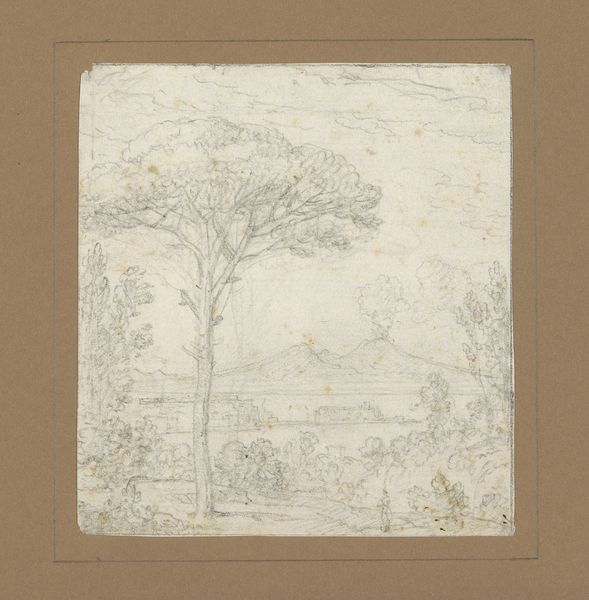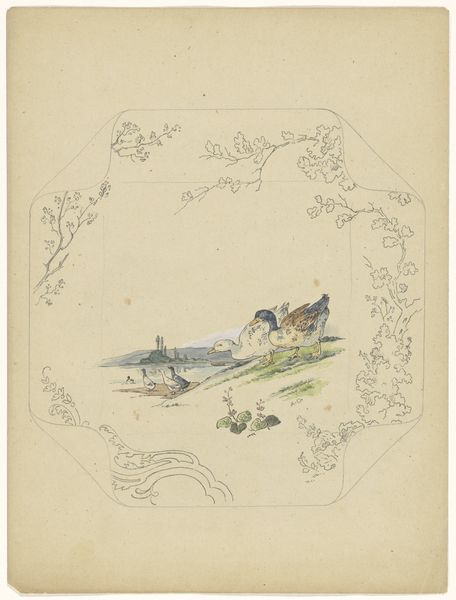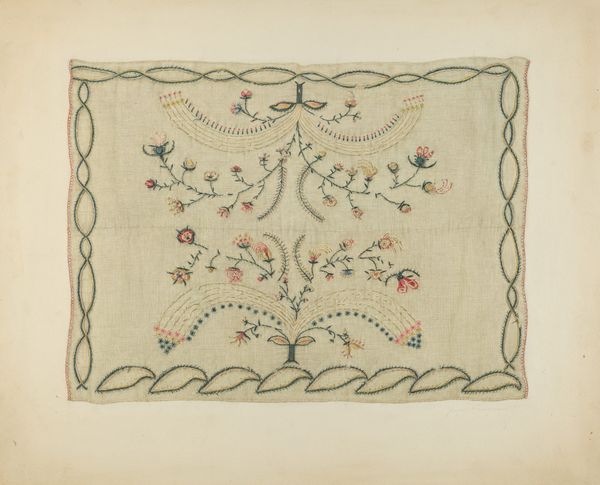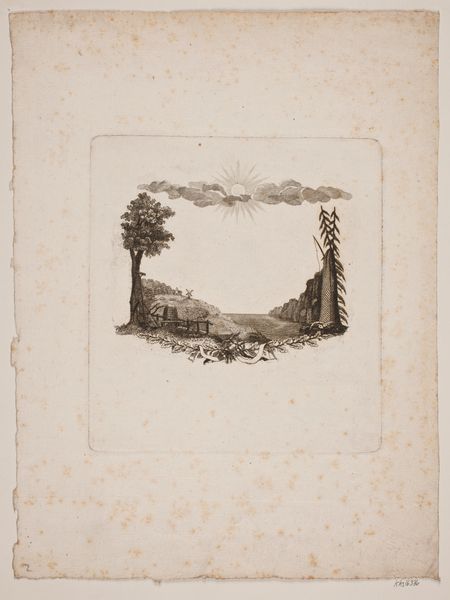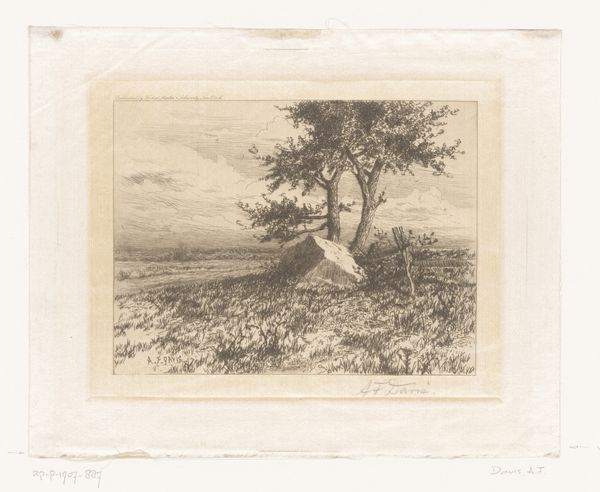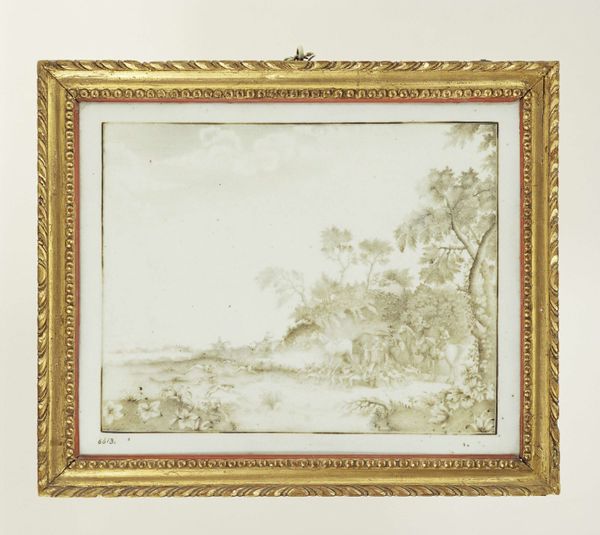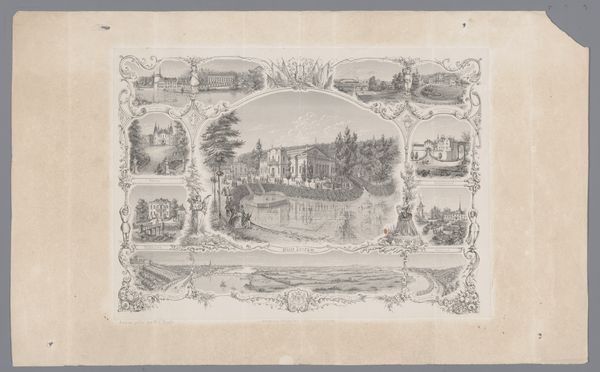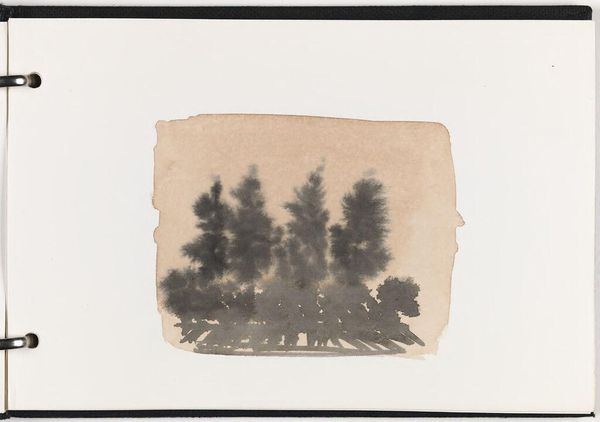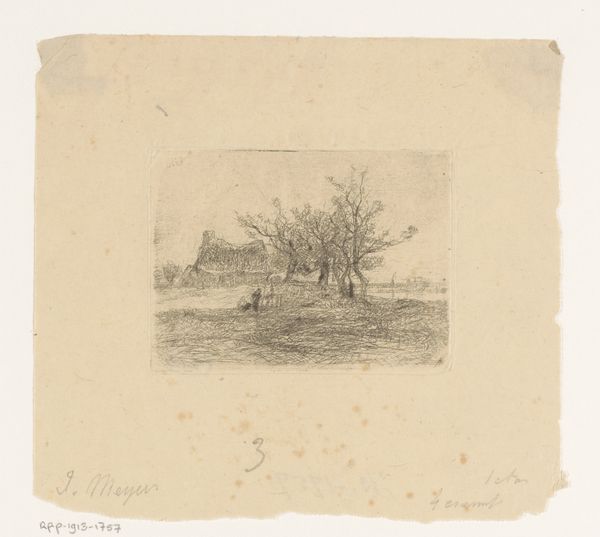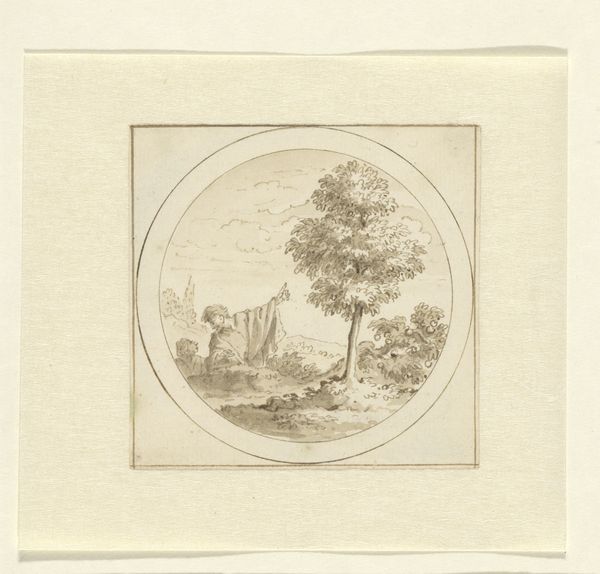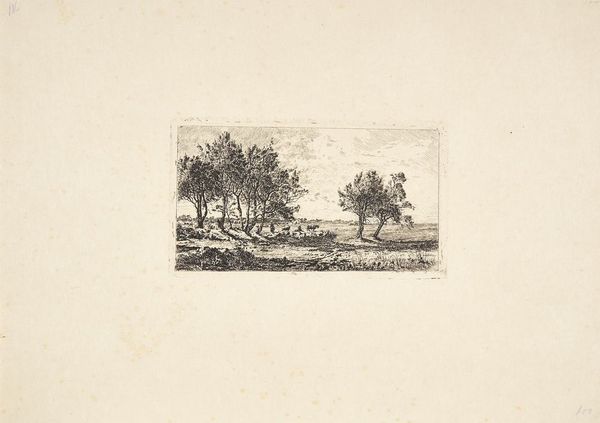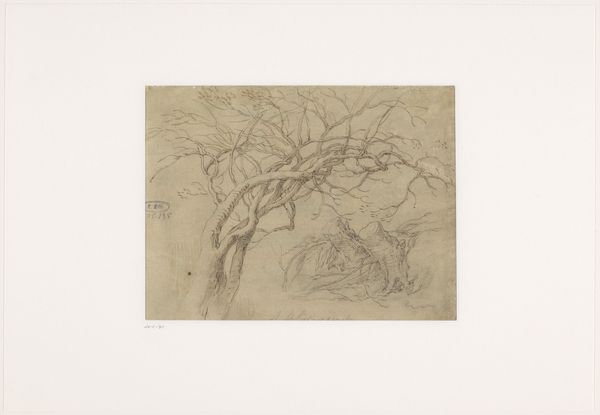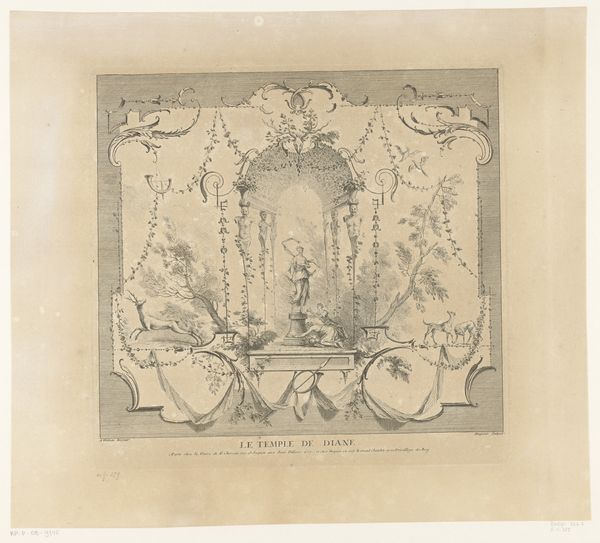
Dimensions: height 68 mm, width 121 mm
Copyright: Rijks Museum: Open Domain
Editor: This is *View of the Thames by Evening* by Theodore Roussel, created between 1897 and 1899. It's a print, specifically an etching. The cityscape within the frame has a tranquil mood but I also noticed an odd decorative Greek border pattern outside of the image rectangle. It feels disconnected. What do you make of that juxtaposition? Curator: The border certainly provides a point of entry for understanding Roussel's work and the artistic climate of the time. The decorative frame makes it seem like the etching within becomes something precious to be protected, maybe even fetishized. Consider how Impressionism, by this point, was achieving widespread institutional acceptance. What's your view on that relationship between avant-garde and establishment? Editor: I see what you mean! It's like the traditional border gives the impressionistic cityscape some validation. It changes my perspective completely! I was only focusing on the image of the Thames originally, and thought that the city escape in the artwork rectangle was the real art piece. Now I’m rethinking the image rectangle, it appears like a viewing window to the “real thing.” The choice to include the border transforms it into more than just a landscape print. Do you think the borders challenge what should be considered the piece? Curator: Exactly! The border isn’t just decoration; it reframes our understanding. This piece participates in a dialogue about what art is, what it’s worth, and who gets to decide. It questions the increasingly commercialized art world and the social structures supporting the art system. Editor: That's fascinating. It makes me consider the politics embedded within what initially seemed like just a pretty picture. It adds so much more depth to my understanding and how the socio-economic standing may influence an artists approach in presenting their art. Curator: Precisely. Thinking about art's public role and institutional context transforms how we appreciate even the most seemingly straightforward image. I hadn’t initially considered what the image might mean, thank you for sparking the discussion!
Comments
No comments
Be the first to comment and join the conversation on the ultimate creative platform.
